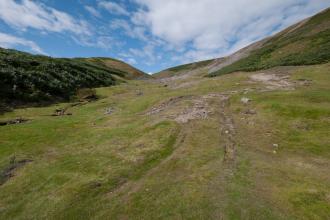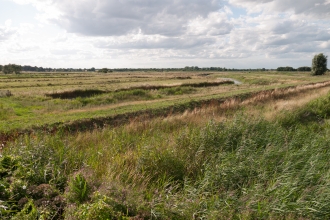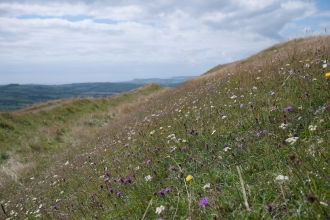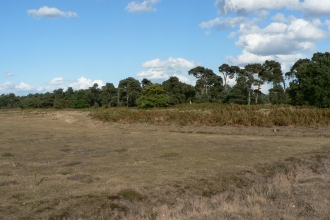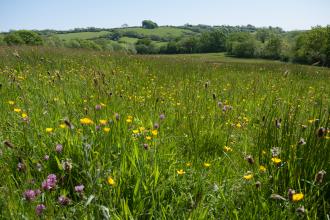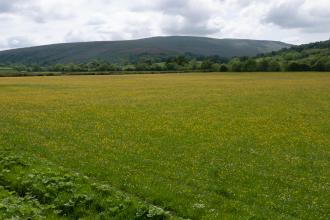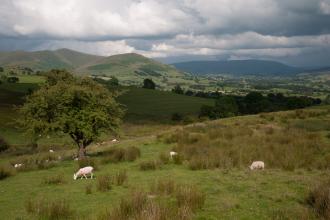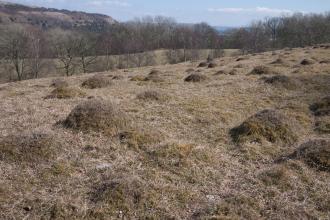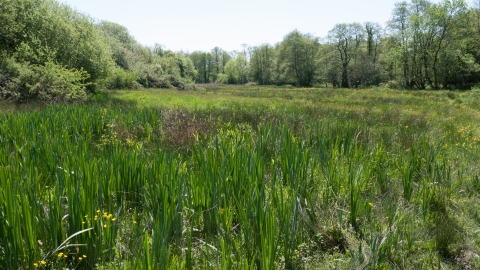
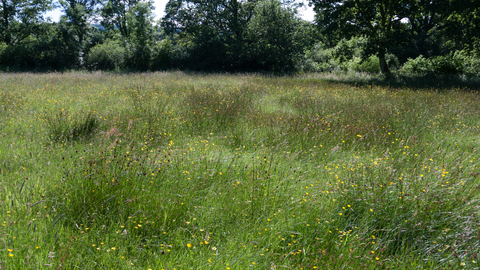
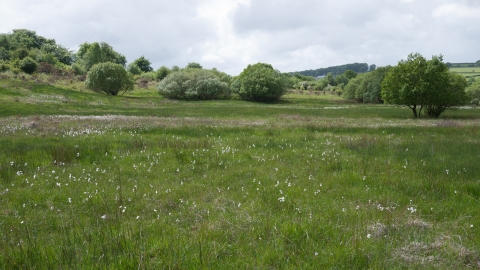
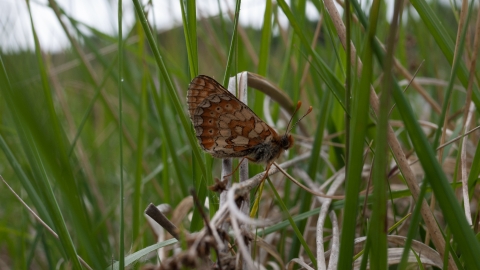
Purple moor-grass and rush pasture
What is it?
This moist, often tussocky (long and thick) grassland is found on flat or gently sloping land on peaty mineral soils in areas with higher rainfall (i.e. the west of the country), or on wetter peatlands in East Anglia. A variety of flowers such as meadow buttercup, devil’s-bit scabious, meadow thistle, ragged-Robin, water mint and self-heal are found with purple moor-grass and sharp-flowered rush. Where the soil is particularly low in nutrients, the vegetation becomes more heathy, with cross-leaved heath and tormentil. Scrub is common and the pasture is often bordered by hedgerows.
Why is it like this?
This habitat is considered to be derived from wetlands as a consequence of partial drainage, livestock grazing and cutting for hay and animal bedding. Widespread across the UK, its character is dependent on the climate, soils and management regime, and this is reflected in the variety of local names used for the habitat:
- In the New Forest, on areas often referred to as ‘wet lawns’, heavy grazing means the sward can be very short, although it still contains typical species such as purple moor-grass, meadow thistle and devil’s-bit scabious, together with velvet bent grass and carnation sedge.
- Further west, the sward is usually less heavily grazed and more tussocky, providing suitable habitat for the rare marsh fritillary butterfly.
- In Devon, it is called ‘culm grassland’, after the underlying culm measures (a geological formation).
- In Wales it is known as ‘rhôs pasture’.
- In East Anglia, where it tends to be cut for hay (and is referred to as fen meadow), bulky tall herbs such as meadowsweet and angelica are a distinctive component of the vegetation and the presence of blunt-flowered rush indicates more lime-rich soils.
- In northern England and Scotland, the meadow thistle characteristic of southern swards is replaced by globeflower and marsh hawk’s-beard.
- In the cool, wet west, a species-poor version dominated by soft rush and sharp-flowered rush (sometimes enlivened with marsh bedstraw and greater bird’s-foot-trefoil) is widespread on more acid peats, often in poorly drained pockets within improved pastures, and is of limited wildlife interest.
Distribution in the UK
Widely distributed in the lowlands, with concentrations in the west and on wetter soils in East Anglia, also extending into Scotland. There is possibly more purple moor-grass and rush pasture in the UK than in the rest of Europe.
What to look for
In late spring and summer, the dark rushes contrast against the soft green of young purple-moor grass, and the sward is speckled yellow and purple with wildflowers; an important nectar source for a variety of uncommon insects. In the west of the country, look for the rare marsh fritillary butterfly where there is a mix of short grass and taller tussocks. Its caterpillars spin distinctive webs on or near its food plant (devil’s-bit scabious), which are easy to see in late summer. The elusive day-flying narrow-bordered bee-hawkmoth, a bumblebee mimic, may also be seen hovering at flowers on sunny days.
Look out for several types of orchid, including heath-spotted, lesser butterfly orchid, fragrant and southern marsh orchids. In the more oceanic west, look for the more diminutive ivy-leaved bellflower, the wavy St. John’s wort and the uncommon whorled caraway. Nesting birds may include curlew and snipe.
Conservation
Grazing and mowing are important to maintain plant species richness, as well as the structural diversity needed to support a range of invertebrates. Without cattle or pony grazing, or cutting for hay or bedding, flowers become smothered with a dense thatch of purple moor-grass (which, unusually for a grass, is deciduous) and wetland scrub can become established, eventually leading to wet woodland. Some sites are burned in late winter to remove the thatch and promote young fresh growth more palatable to livestock, and encroaching rushes are sometimes cut and removed.
As with many grassland types, much purple-moor grass and rush pasture has been lost through agricultural ‘improvement’ or has deteriorated through abandonment or inappropriate grazing. Some of this loss has been recent, with 50% of culm grassland lost in the last two decades of the 20th century. However, the value of this habitat is now more widely appreciated, and landscape-scale approaches aiming to link up fragmented sites and reinstate appropriate grazing are benefiting remaining areas.

